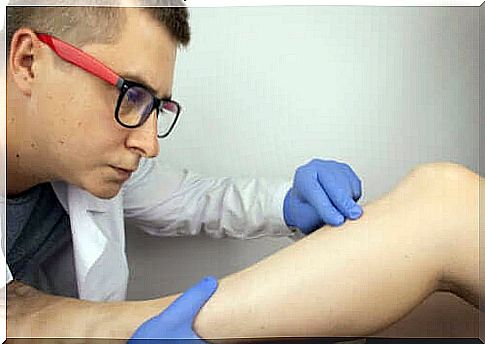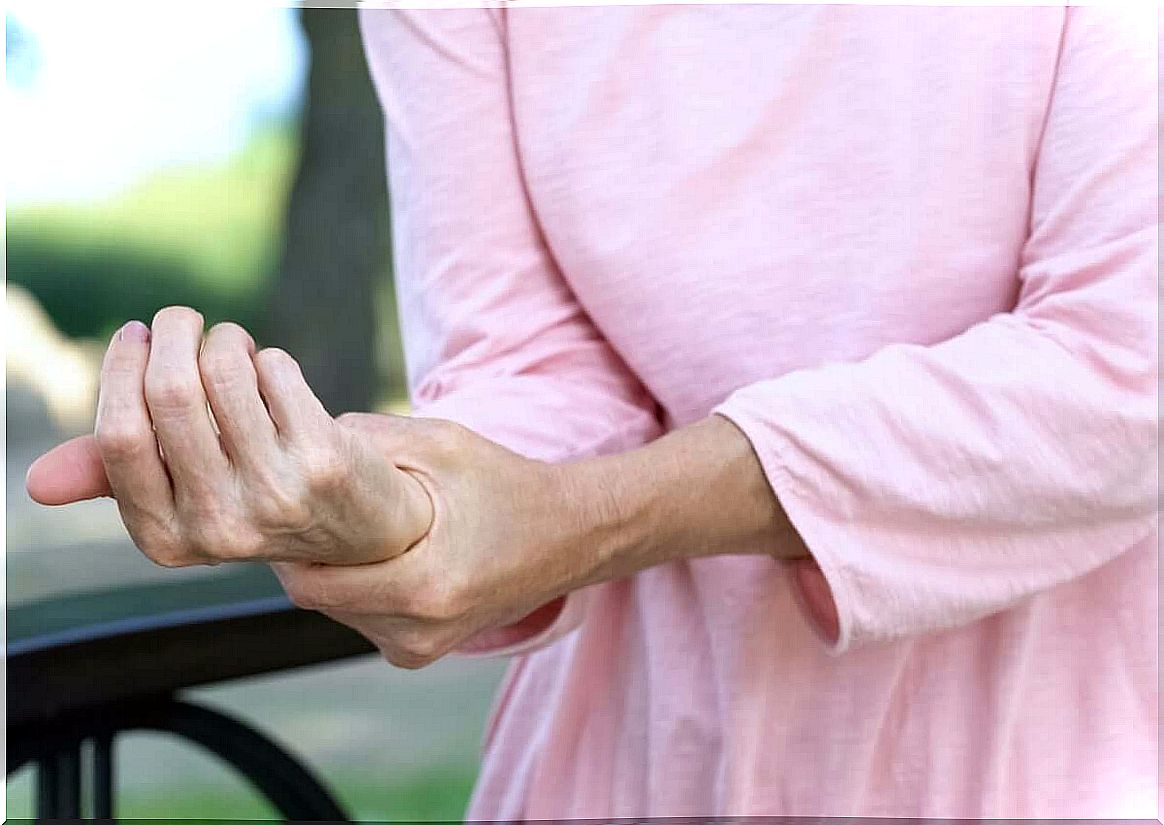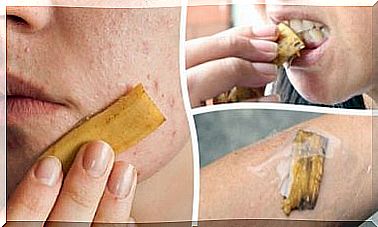Bone Contusion: Causes, Symptoms And Treatment

Fractures are one of the most common types of injuries and involve breaking the continuity of the bones. However, there is also a contusion of the bone that could be defined as a partial fracture of a certain part.
Bones are structures made up of two layers – a compact body and a spongy body. The former, external, is more resistant, while the latter is fibrous and vascularized.
Bone contusion is associated with damage to the spongy substance, which leads to the accumulation of blood in this area and the formation of a hematoma. Studies have shown that this problem is more common in adults, although it is also common in children.
Bruising of the bones and its symptoms
Subcutaneous hematomas are easily identified due to the immediate discoloration of the skin. However, in the case of contusion or swelling of the bones, the diagnosis is more complicated.
A characteristic symptom of an injury is pain that increases with movement and relieves when you rest. In more difficult cases, it can persist while resting and even sleeping.
What’s more, people with bruises may show the following symptoms:
- Inflammation around the injured area.
- Stiffness or inflammation of the joints closest to you.
- Sensitivity to touch.
- Change in skin color.
Symptoms last for 12 to 24 weeks. It all depends on the severity of the injury and the amount of time the body takes to recover.

Main causes
The most common cause of bone bruises is a hard blow, similar to fractures. The areas where the bone is close to the skin, such as the knee, ankle or elbow, are most susceptible to this injury.
It therefore applies to sports injuries, road traffic accidents and falls from a height. Sprains can also lead to bone swelling.
Certain medical conditions, such as rheumatoid arthritis, can lead to bone bruises. This is because bones are weakened by disease, making them more prone to injury.
When is it necessary to see a doctor?
Bone bruises can cause serious problems if not treated properly, so be sure to see your doctor if you have suspicions.
One possible complication is osteonecrosis, which occurs when the swelling is not absorbed properly. Then, not enough blood flows to the bones, and the cells begin to die.
You should also see a doctor if you experience any of the following symptoms:
- Severe swelling.
- Strong inflammation of the joint next to the injured place.
- Inability to move the limb.
- Severe pain that does not go away with painkillers.
Diagnosis of bone contusion
The specialist will first determine the cause of the injury. He should also assess the intensity of pain and the presence of other symptoms. He will then ask a series of questions and perform a test, as the bruise may be related to other problems, such as ligament rupture.
The diagnosis of bone contusion is carried out using imaging tests, so it is possible that X-rays and magnetic resonance imaging will be performed. The x-ray radiation will not show any bruises, but will show the general condition of the bone.
The MRI will focus on the inside of the bone and show a bruise. This examination allows you to accurately determine the location, extent and size of the edema.
Treatment options available
Bone contusion is not a problem that requires surgical treatment, as it disappears on its own within a few months. For minor injuries, rest and symptomatic non-steroidal anti-inflammatory drugs (NSAIDs) are recommended.
Applying ice for 15 to 20 minutes can reduce inflammation in the injured area, but do not apply it directly to the skin. If the bruise is in the lower limb, it is important to keep the leg in an elevated position.
In case of severe injuries, the load on the injured limb should be limited – it may be necessary to use crutches. It is recommended to immobilize the limb only in the case of injuries to joints and ligaments

Prevention of bone contusions
Bone bruises and other diseases of the osteoarticular system can be prevented by maintaining the overall condition of the bones. Lifestyle changes have a significant impact on this.
Habits and activities that contribute to good bone health include:
- Maintaining a balanced diet with the right proportions of nutrients.
- Regular exercise and sports.
- The use of pads when practicing contact sports.
- Avoiding smoking and reducing alcohol consumption.
Calcium is the basic component of bones, so it is worth taking care of the supply of this mineral. The daily requirement of women and men is 1000 milligrams, and studies show that up to half of the population does not consume enough of this mineral.
A bruise to a bone should not be taken lightly
Bone contusion is a seemingly uncomplicated problem that goes away on its own, but can sometimes lead to serious complications if not treated properly. Fortunately, treatment is simple and limited to NSAIDs and medical check-ups.
Physiotherapy may be needed for severe injuries that limit joint mobility. The recovery process is fairly quick. Relapses and complications are rare.









